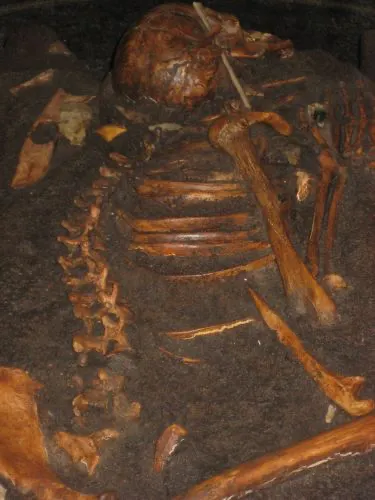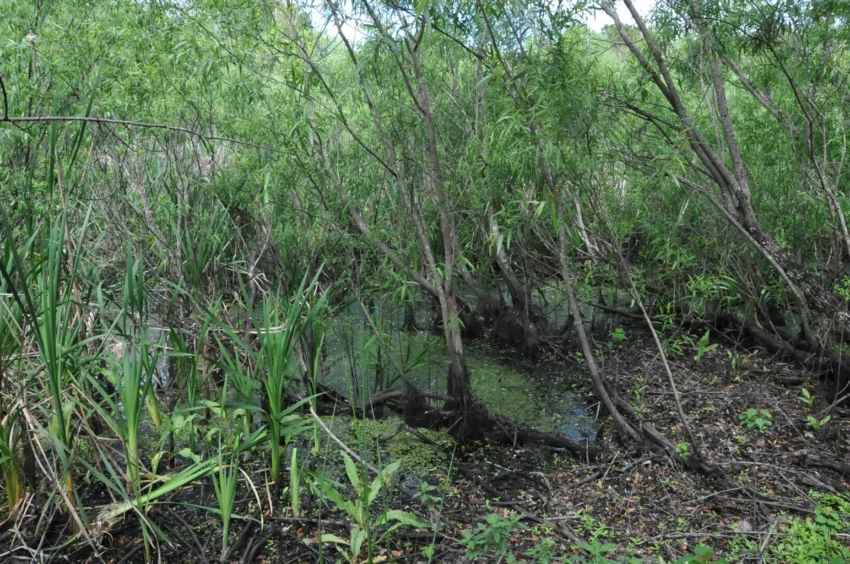Overview of Windover Archaeological Site
The Windover Archaeological Site is a Middle Archaic (6000 to 5000 BC) site in Brevard County near Titusville, Florida. It’s a National Historic Landmark known for its well-preserved human remains and artifacts.
Get your dose of History via Email
Discovery of Windover
The site was discovered in 1982 during the development of Windover Farms. A backhoe operator unearthed several skulls, sparking interest. Subsequent radiocarbon dating of the bones established their significant age, leading to a full-scale archaeological investigation.
The Significance of the Site
Windover is crucial for understanding the early inhabitants of Florida. The site offers remarkable insights into the burial practices and daily lives of Archaic peoples.
Unearthing the Past
Windover is a small pond that has been a water source since around 8000 BC. Over centuries, layers of peat at the pond’s bottom preserved numerous artifacts and human remains. In 1984, archaeologists began a detailed excavation, revealing the depth and richness of the site.
Artifacts and Daily Life
Researchers found artifacts like fabrics, atlatls, and projectile points, illustrating a sophisticated culture. The analysis of gut contents showed a diet of local wildlife and fruits, indicating a well-adapted lifestyle.

Discovering the Windover Bog Bodies
At the Windover Archaeological Site in Florida, scientists have unearthed the remains of 168 individuals, remarkably preserved in the peat of a small pond. This preservation has provided an exceptional view into the Middle Archaic period.
Method of Burial
The community at Windover used a unique burial method, submerging bodies in peat underwater and securing them with stakes. This practice aligns with a belief across several Native American cultures that water acts as a barrier to the spirit world.
Preservation and Examination
The anaerobic conditions of the peat created an environment that preserved not just skeletal remains but also soft tissues. Bodies were typically positioned on their left sides, with heads pointed west, suggesting ritualistic practices. Stakes used in the burial likely prevented the bodies from surfacing over time.
Insights from the Remains
The demographic of the buried ranged from infants to seniors, with many showing signs of past injuries and chronic conditions like osteoarthritis. Some had injuries that likely caused their deaths, such as a male with a spear point in his pelvis.
Cultural Significance of Burial Goods
Children and teenagers were buried with more grave goods than adults, suggesting a high societal value placed on the young. Among these finds was a teenage male with spina bifida, indicating the community’s care for its vulnerable members.

Dietary Insights
Analysis of the gut contents from the bodies shows a diet rich in local fruits like wild grapes and elderberries, along with protein from hunted animals and fish. The wear on their teeth suggests that their food often contained grit, yet dental health was relatively good, with few cavities.
Legacy of the Windover Bog Bodies
The Windover site is a crucial archaeological find that offers insights into the daily lives, health, and cultural practices of its ancient inhabitants. It bridges the gap between past and present, helping us understand the sophistication of societies thousands of years ago.
The Impact of Windover’s Discoveries
Windover has significantly altered the understanding of the Archaic period in Florida. Its findings provide a detailed picture of community health, diet, and cultural practices in ancient times.
National Recognition
In 1987, Windover was designated a National Historic Landmark, affirming its importance in American archaeology. This recognition underscores the site’s contribution to our knowledge of prehistoric North America.
Sources:
Wikipedia
Image Credit

